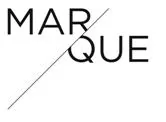PPAs are agreements to sell energy. A solar PPA is where a customer buys the energy output of a solar PV system, but not the system itself. Normally a supplier owns and operates the system, and a customer buys the energy output for a fixed term. It's all the rage because they let customers buy clean energy with low up-front costs.
Here's our rundown of things to look out for in your average solar PPA:
- Regulations, regulations, regulations: Newsflash: selling energy is highly regulated. Suppliers need an authorisation or exemption from the regulators to sell energy. Generally speaking if the customer keeps a connection with an existing energy retailer (so the PPA isn't the sole supply of energy) an exemption could apply. But it's not straightforward and suppliers need to get this right - read break the law if they don't.
- Renewable energy certificates: Make sure the PPA covers who owns any RECs (most likely small-scale technology certificates). Require the customer to do everything to transfer and register the RECs to the supplier, if the supplier wants them.
- Access: Give the supplier access to fit and maintain the system. It'll be a bit awkies (not to mention expensive) if the system goes down but the supplier can't access it to get things back on track.
- Ownership: Make sure the system is the personal property of the supplier. The customer should have no ownership interest in the system until it buys it outright. The idea is to avoid the system being a fixture of the property it's fitted to. Think about registering the system on the PPSR to protect the supplier's interest.
- When the PPA ends: Describe what will happen to the system. Will it be bought outright? Removed (and at whose costs)? What happens if the PPA ends early? There are lots of possibilities, just make sure it's covered in the PPA.
We do not disclaim anything about this article. We're quite proud of it really.


